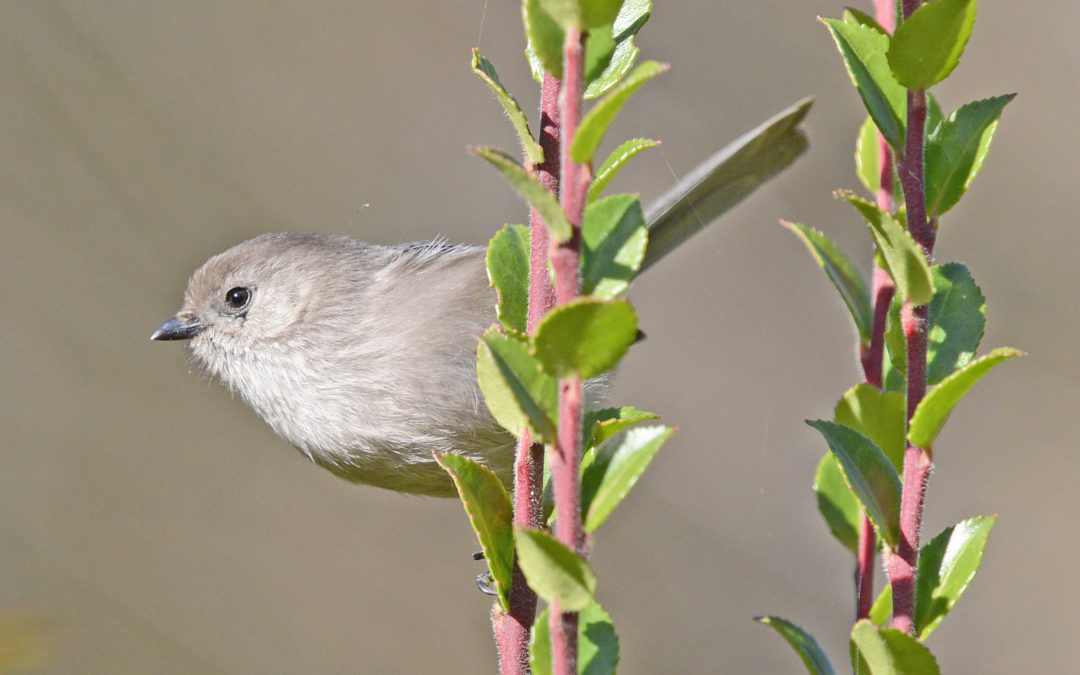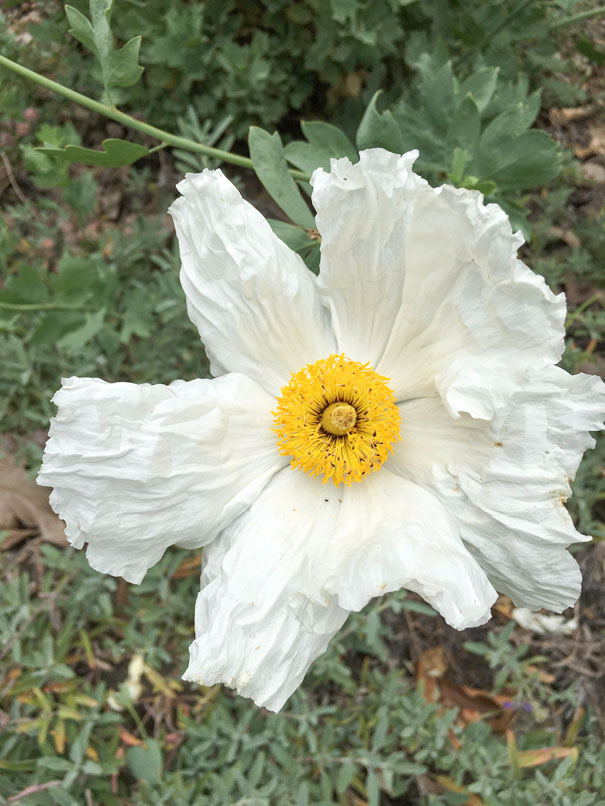Image credit VJAnderson, adult male Bushtit (Psaltriparus minimus)
Bob Gorcik volunteers in Arlington Garden when his work schedule allows him to do so and has been a birder since he was in middle school. As an undergraduate, he had multiple opportunities to as a wildlife research assistant, where he got to study birds up close.
In this month’s column, I will be talking about some of the bird that can be seen in and around Arlington Garden that can be commonly found in parks, gardens, and large residential properties that contain some native landscaping and small habitat fragments but are not likely to be seen right outside your window in your apartment complex’s courtyard.
These birds discussed this month lie somewhere between Wrentits, California Thrashers, and California Quail that are typically only heard and encountered on hiking trails that run through larger tracts of chapparal and coastal sage scrub and those that can easily be found in small city parks in the heart of urban centers, such as mockingbirds, house finches, black phoebes, and hummingbirds. Unlike the birds discussed in my previous segment, these birds discussed below are year-round residents.
One bird that many find to be cute due to their tiny size and their tendency to form large flocks that flit from tree to tree is the Bushtit (Psaltriparus minimus) which can be found nearly anywhere where you have large, branching trees, especially our native Coast Live Oaks. Wherever seed heads of many kinds of trees and wildflowers are allowed to be left on branches, grasses, and wildflowers, you will certainly see pairs of Lesser Goldfinches (Spinus psaltria) in many parks, gardens, and fields.
Related to sparrows, the somewhat dull-colored California Towhee (Melozone crissalis) gleans seeds off the ground in more exposed spaces in Arlington Garden and nearby habitats, while a rustle in the leaf litter and undergrowth will nine times out of ten be its cousin the Spotted Towhee (Pipilo masculatus). With its white-spotted black back, and orange sides, these birds are often well camouflaged in the denser foliage.
Another small, somewhat dull-colored songbird that like the Spotted Towhee tends to be found hopping and flying around dense foliage is the Bewick’s Wren (Thyromanes bewickii). The Bewick’s Wren with its spotted brown back and its white stripe above the eye, can be distinguished from its cousin the House Wren (Troglodytes aedon) which lacks the eye stripe and is a bit more brown all over. The House Wren can be seen at Arlington Garden, though it is less common than the Bewick’s.
Finally, the California Scrub Jay (Aphelocoma californica) like all jay species around North America, are conspicuous, bold, and don’t try to hide. Like many of the birds mentioned in this month’s newsletter, the Scrub Jay is one of the most commonly encountered bird in our chaparral and oak woodland habitats, but it can also be found in neighborhoods that have similar dense foliage, whether native or non-native species. If you are lucky, you might see them occasionally burying oak acorns similar to squirrels for future food sources, thus contributing to new oak seedlings growing further than where acorns would drop from their parent tree.
One more local common bird species that also depends on oak acorns is the Acorn Woodpecker (Melanerpus formicivorus). One of California’s most common woodpecker species, and only found in California, Arizona and Mexico, the Acorn Woodpecker makes a distinctive noisy laughing sound, and has the unusual habit of pounding countless acorns into tree trunks, as a way to attract insects hiding out behind tree bark. Highly adapted to and abundant in California’s oak woodlands, they have adapted well to our parks, gardens, and residential areas that contain tall trees.




Recent Comments